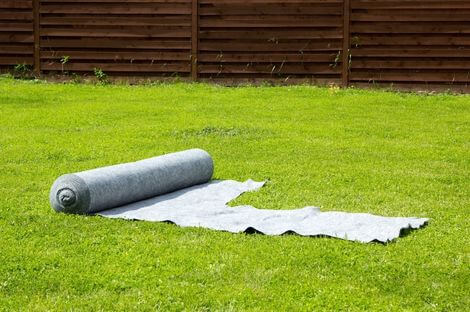The environmental impact of geotextiles has been a topic of debate for some time. Some believe that they are detrimental to the environment, while others argue that they can be used in a sustainable way. There is no doubt that geotextiles have an impact on the environment, but what is often overlooked is their role in sustainable development. Geotextiles can be used to improve water quality, control erosion, and reduce greenhouse gas emissions. When used properly, they can help us achieve a more sustainable future. In this blog post, we’ll take a closer look at the environmental impact of geotextiles and how they can be used in a sustainable way.
What is geotextile and what are its main applications?
Geotextiles are specialized synthetic fabrics used in civil engineering and environmental engineering applications. The material is designed to have a high strength-to-weight ratio and provide erosion control, filtration, drainage, and reinforcement for soil structures.
What is Geotextile?
Geotextile is a permeable material used in civil engineering and construction projects in order to offer reinforcement to weak surfaces or aid drainage. It comes in many forms, including woven or non-woven fabrics, made from synthetic fibers such as polypropylene that are designed to last for many years with minimal maintenance. Geotextiles have a wide range of applications, such as waterway linings and banking reinforcement as well as control of sedimentation and erosion to separate soil layers. Its unique properties have allowed geotextile to become a valuable asset for sustainable development since it offers increased stability around engineering structures while also promoting better water retention rates and limiting the impact of run-off on natural environments.
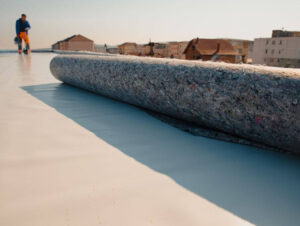
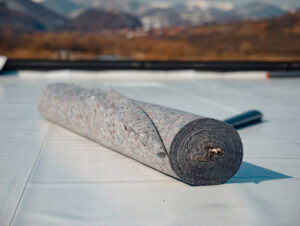
Geotextile’s Main Applications
- Road construction
- Soil erosion control
- Geosynthetic Clay Liners(GCL)
- Landfill Construction
Road Construction: Geotextiles can be used as an underlayment for roads to provide support against heavy traffic loads while also allowing water to pass through without compromising the road structure’s integrity. It can also be used as a separation layer between different layers of pavement to prevent cracking due to differences in stiffness between the layers.
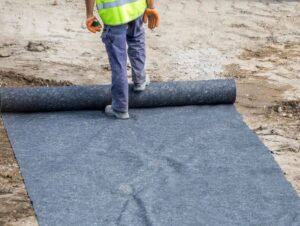

Soil Erosion Control: Geotextiles can be used to help stabilize slopes in areas prone to soil erosion by providing extra reinforcement for the underlying soils. The fabric helps protect against surface runoff by creating a physical barrier between the surface soils and any underlying ones that may not be as stable against erosion forces such as rainfall or wind. Additionally, they can also be used in combination with other forms of erosion control such as vegetation or engineered structures like retaining walls.
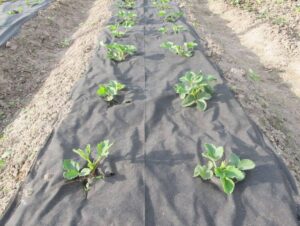
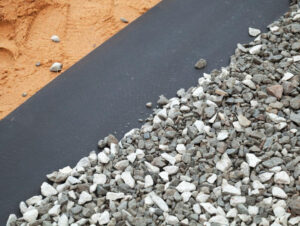
Geosynthetic Clay Liners (GCL): GCLs are composite materials consisting of a thin layer of bentonite clay sandwiched between two layers of geotextile fabric which can then be used as liners for landfills or containment ponds where it prevents contaminants from seeping into surrounding groundwater supplies or leaching out into nearby streams or rivers.
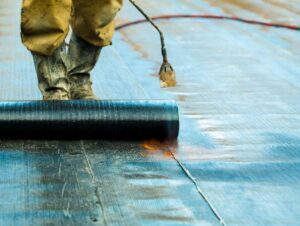

Landfill Construction: Geotextiles can also be used for landfill construction projects where it acts as filter fabric on top of waste materials before being covered with dirt or rockfill materials. This helps keep smaller particles from escaping into the environment while still allowing water to flow freely through the waste material layer below so that it does not become saturated and cause instability issues with any overlying soil layers. Moreover, it helps prevent odors from escaping due to its porosity which allows air to pass through but still traps small particles from escaping with it.
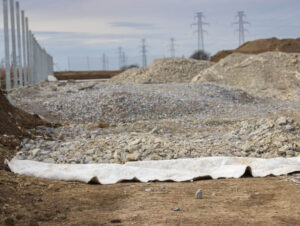
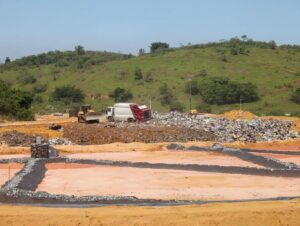
To summarize, geotextiles are an incredibly versatile material with many uses in civil engineering projects ranging from road construction and stabilization to soil erosion control and landfill construction projects. Their durability combined with their ability to withstand extreme temperatures makes them ideal for use in tough environments such as those found around landfills where they help keep contaminants contained within their boundaries while still allowing proper drainage practices underneath them so that no instability issues arise due to excessive moisture buildup within the waste material layer beneath them. Furthermore, their lightweight nature makes them easy to transport and install when compared with heavier alternatives such as stone aggregate or concrete paving materials making them ideal for almost any civil engineering application imaginable!
How does geotextile impact the environment, both during manufacture and after installation?
Geotextile fabric has seen a recent increase in popularity as a tool for assisting with sustainable development, and its effects on the environment make it an appealing choice.
Environmental Impact During Manufacture
Geotextiles are typically made from recycled plastics such as polyethylene (PE) or polypropylene (PP). The production process for geotextile requires significant energy consumption and can have negative impacts on air quality if not properly regulated. Additionally, the use of chemical agents during production can also result in water contamination. However, most modern production processes adhere to strict environmental regulations to ensure that any pollution created is minimized or eliminated.
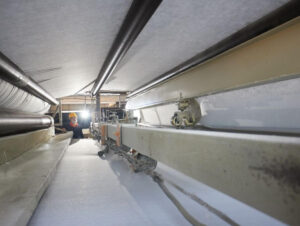
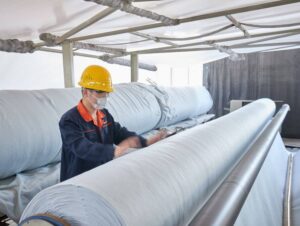
Environmental Impact After Installation
Once installed, geotextiles serve as a physical barrier between soil and water, preventing contaminants from entering waterways and protecting fragile ecosystems. This helps reduce runoff into nearby rivers, lakes, streams, and other bodies of water. In addition to protecting against pollutants, geotextiles also reduce erosion by reducing soil displacement due to wind or hydrological forces. This helps protect landforms and prevents sedimentation buildup in nearby waterways.
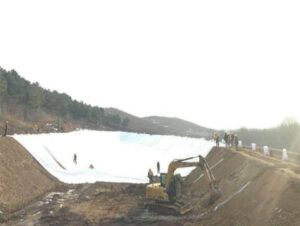
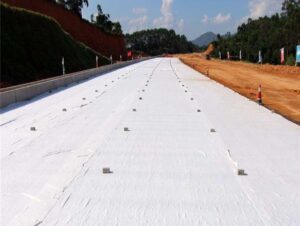
To conclude, the environmental impact of geotextile both during manufacture and after installation is significant. While it does require a certain amount of energy consumption during production, modern manufacturing processes adhere to strict environmental regulations to minimize any potential pollution created by the process. After installation, geotextiles act as a physical barrier between soil and water which helps reduce runoff into nearby rivers and lakes while also helping reduce erosion caused by wind or hydrological forces. From selecting suitable raw materials for production through proper disposal methods afterward, there are numerous ways that manufacturers and installers alike can work together to reduce any potential negative impacts associated with geotextile use while still retaining all its beneficial properties. Ultimately, by taking a proactive approach toward minimizing any potential risks posed by geotextile products we can ensure that these tools remain an invaluable asset in protecting our planet for future generations.
What role can geotextile play in sustainable development projects?
Sustainable development projects are becoming increasingly important around the world as climate change continues to be a pressing issue. One way these projects can be made more efficient and effective is through the use of geotextiles. Geotextiles are permeable fabrics that can be used in civil engineering and construction. They have numerous applications, including soil stabilization, drainage, and erosion control. Let’s take a look at how geotextiles can play an integral role in sustainable development projects.
Geotextiles for Erosion Control
One of the most common uses for geotextiles is erosion control. As part of a sustainable development project, they can be used to protect existing surfaces from erosion caused by wind or water. Geotextiles act as a barrier between the ground and any moving elements such as water or wind, preventing any damage caused by these moving elements. They are also highly permeable which allows them to absorb rainwater and prevent soil erosion due to runoff. This makes them an ideal choice for areas with steep slopes or areas that are prone to flooding.
Geotextiles for Drainage
Another application of geotextiles in sustainable development projects is drainage. The permeability of geotextile fabric allows it to serve as a filter between two layers of soil, which helps reduce runoff and increase infiltration into the ground below it. This helps keep surface water from pooling on top of the fabric, reducing flooding and improving drainage in a given area. It also helps improve groundwater recharge rates, allowing for more efficient water usage during dry spells when water resources may become scarce. Furthermore, using geotextile fabric in drainage systems reduces strain on other infrastructure such as sewers or storm drains since it will help divert excess surface water away from these systems before it becomes too much for them to handle.
Geotextiles for Soil Stabilization
Finally, geotextile fabrics can also be used for soil stabilization purposes within sustainable development projects. As its name implies, soil stabilization involves reinforcing soils with fibers or particles so that it does not move around when exposed to external forces such as winds or heavy rains. Geotextile fabrics provide a layer of reinforcement that prevents the movement of soil particles while still allowing water to drain through them effectively due to their permeability properties mentioned earlier. This helps reduce slope instability issues caused by landslides or mudslides since the fabric acts like a net holding everything together despite external forces trying to move it around otherwise.
In summary, geotextiles play an important role in sustainable development projects due to their ability to provide erosion control, drainage solutions, and soil stabilization capabilities all at once without causing any environmental damage whatsoever because they are 100% biodegradable materials with no toxic chemicals involved in their production process either directly or indirectly making them excellent options for green construction sites everywhere! Their flexibility and versatility combined with long-term durability even when exposed to harsh environmental conditions make them ideal choices for any kind of construction project which requires sustainability both now and into the future! Sustainable development projects need all kinds of tools available at their disposal. Luckily, one of those tools is readily available right now – geotextile!
Are there any alternatives to geotextile that are more environmentally friendly?
Geotextile is a fabric often used as an alternative to soil or rock in construction projects, but its environmental impact can be concerning. It can come from non-renewable sources and contain heavy metals which leach into the environment, posing a risk to ecosystems. Thankfully, there are alternatives available that are better for the environment.
Natural Organic Materials
Organic materials like straw, wood fiber, coconut fiber, and compost can be used as an alternative to geotextile in certain applications. These materials are safer for the environment because they are biodegradable and therefore do not create lasting pollution concerns like synthetic products can. They also provide additional benefits such as improved soil structure and enhanced vegetation growth on slopes.
Synthetic Fabrics with Natural Fibers
Synthetic fabrics with natural fibers like jute or coir provide some of the same benefits as standard geotextiles but with fewer environmental impacts. These fabrics offer excellent tensile strength and erosion control performance while also being biodegradable and compostable over time. They are also more affordable than traditional geotextiles since they don’t need to be replaced often.
Biodegradable Landscaping Mats
Biodegradable landscaping mats are made from natural fibers such as coconut husk or straw woven into a mat-like form that is then covered with a biodegradable netting or mesh. This type of product offers superior protection against erosion without the need for chemical treatments or synthetic polymers that can have a detrimental effect on the environment in the long run. What’s more, these mats are designed to be lightweight and easy to install so they require minimal labor costs compared to traditional geotextile installation methods.
How can the environmental impact of geotextile be minimized during manufacture and installation?
With its ability to help stabilize soil, reduce erosion, and regulate temperature, geotextile has become an increasingly popular solution for many applications. However, the environmental impact of its manufacture and installation must be considered in order to ensure sustainable development. Luckily, there are measures that can be taken during manufacture and installation to minimize this impact.
During Manufacturing
The two main sources of environmental pollution from the manufacturing of geotextiles come from the production process itself and from landfill waste. To minimize these impacts, manufacturers should practice energy conservation by utilizing energy-efficient machinery whenever possible. More importantly, manufacturers should focus on reducing their overall energy consumption by implementing strategies such as using renewable resources or investing in renewable energy sources. Furthermore, manufacturers should strive to reduce their landfill waste by utilizing recycled materials for production when possible and adopting zero-waste policies when feasible.
During Installation
The use of geotextiles in civil engineering projects involves cutting them into pieces that fit onto whatever surface they are intended for. During this process, it is important to minimize the amount of wastage generated as much as possible. Any material that is cut away during installation is considered wasted material since it cannot be reused in any other way. To reduce wastage during installation, designers must plan accordingly and use software programs that help calculate how many pieces will be needed for each project before ordering materials. In addition, designers should always consider reuse options when possible while old pieces of geotextile can be used instead of new ones if they are still functional.
How can geotextiles be used with geomembranes?
Geotextiles and geomembranes are commonly utilized together in a variety of civil engineering and environmental applications, providing multiple functions in a single system. These materials are chosen for their ability to enhance the performance of each other, resulting in a more efficient and effective solution.
For instance, in landfill liners, geomembranes are placed as liners to prevent leachate (liquid waste) from contaminating groundwater, while geotextiles are placed on top of the geomembrane to provide filtration and separation. This combination helps to ensure that the landfill is protected from contamination while also providing the necessary filtration to prevent the buildup of harmful chemicals.

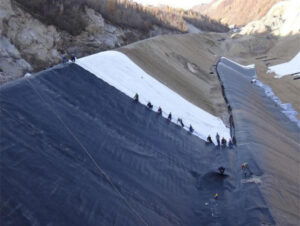
Another example is the use of geotextiles and geomembranes in pond liners. Geomembranes are used as pond liners to prevent water seepage, while geotextiles are used as underlayments to prevent punctures and to provide separation between the soil and the liner. This combination helps to ensure that the pond remains watertight and secure, while also preventing the liner from being punctured by rocks or other sharp objects.
In waste containment, geomembranes are used as a barrier to prevent the release of liquids and gases from waste containment areas, while geotextiles are used to provide filtration and separation between the waste and the surrounding soil. This combination helps to ensure that the waste remains contained, while also providing a barrier to prevent contamination of the surrounding environment.
Finally, in road construction, geomembranes are used as a barrier between the subgrade soil and the asphalt or concrete, while geotextiles are used to provide separation and filtration to prevent the mixing of soil and aggregate layers. This combination helps to ensure that the road remains stable and secure, while also preventing the mixing of the different layers, which can lead to road failure.
In a word, the combination of geotextiles and geomembranes provides a more comprehensive solution for various civil engineering and environmental applications, and their use together is becoming increasingly popular due to the many benefits they offer.
Conclusion
Geotextile is a versatile fabric with many applications in the construction and engineering industries. It can be made from natural or synthetic fibers, and its environmental impact depends mainly on the materials used to make it. Geotextile is not biodegradable, but it is recyclable. When properly disposed of, it does not pose a significant risk to human health or the environment. However, geotextile can have a negative impact on the environment during manufacture and installation if proper precautions are not taken. There are some alternatives to geotextile that are more environmentally friendly, but they may not be suitable for all applications. The best way to minimize the environmental impact of geotextile is to use recycled materials and take advantage of their recyclability when disposing of them.

